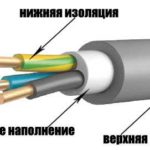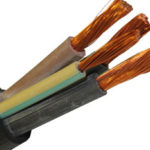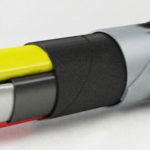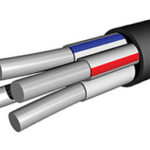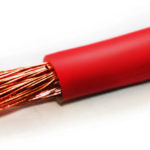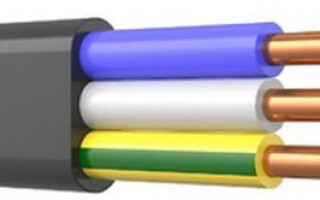In the power supply of objects for various purposes, residential, office buildings and industrial facilities, various brands of wires and cables are used. One of the most popular is the VVG brand cable, in many respects it meets the numerous requirements in various operating conditions.
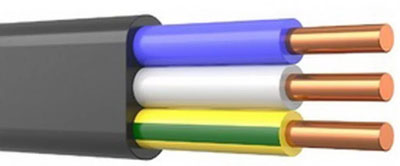
Content
Application area
VVG cable is used for laying inside residential apartments and public buildings. Suitable for mounting lighting lines, socket groups and powering individual household appliances with high power consumption, such as electric stoves, heating boilers, split systems and air conditioners and equipment with powerful electric motors.
VVG is designed for the transmission and distribution of electricity with a voltage of 0.66, 1, 3 and 6 kV at a frequency of 50 Hz, the cross section of the wires depends on the amount of current consumed. Laying is allowed:
- Outdoors, subject to protection from UV rays and no danger of mechanical damage;
- Through the air on cable extensions;
- along the walls of buildings;
- On the surface of the earth;
- In dry rooms and with high humidity;
- In tunnels on cable growth (cable ladders);
- In cable shafts;
- In areas with increased fire hazard.
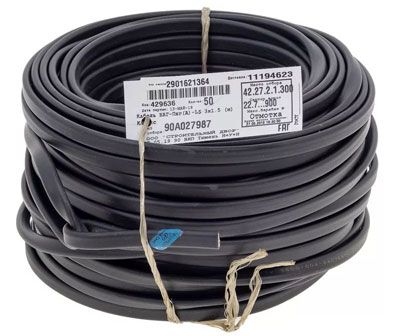
Underground, it is recommended to lay it only in metal, asbestos or plastic pipes.
Explanation of abbreviations and modifications
The abbreviation, which is applied to the outer surface of the insulating sheath of the cable, indicates its design features and technical characteristics. The sequence of alphabetic and numeric designations carries certain information. The first capital letters VVG denote the following:
- B - the material from which the insulation of the conductive cores under the outer sheath is made, in this case it is polyvinyl chloride. The letter "B" comes from the name of the main component of the material of the vinyl insulating layer;
- B - the material of the outer shell, the main composition of which is also vinyl. This insulation is called PVC, it is a thermoplastic. 43% of its composition is a petrochemical product ethylene and 57% combined chlorine. The composition of the plastic insulation may vary, some models use a PVC sheath with impurities that block the spread of fire.
- G - indicates that the common sheath of conductive wires does not have an armored layer, such a cable is called bare, not having protection from harsh mechanical stress.
All models have copper wires with a rigid monolithic or flexible stranded structure.
There are a number of modifications of plastic insulation:
- VVGpng - in this option, the added letter designation "png" indicates that it can be laid as part of a group of cables of other brands. Its outer shell does not spread combustion. (PNG - flat non-combustible)
- VVGng–ls means that the composition of the plastic insulation with impurities that, when burned, reduce the release of toxic gases and smoke;
- VVGng–hf in case of strong ignition of the environment and high temperature, the insulating layer burns out, does not emit corrosive gases;
- VVGng–fr indicates the presence of a mica tape in the insulating layer that creates a thermal barrier between the environment and the conductive wires.
If there are no such designations, they spread the burning of the insulation, this is the usual VVG.

The marking of the VVG cable in the digital designation of the abbreviation indicates the number and cross section of the conductive cores.
Power cable VVG png 3x2.5 + 1 in this version of VVG, the decoding of the marking shows:
- PNG - flat, non-combustible;
- 3 - the number of conductive wires;
- 2.5 - cross-sectional area of wires;
- +1 - additional ground wire in the cable.
For laying under plaster, it is most often convenient to use VVG wire with a flat design, it fits compactly into strobes and is easily plastered without protruding on the surface.
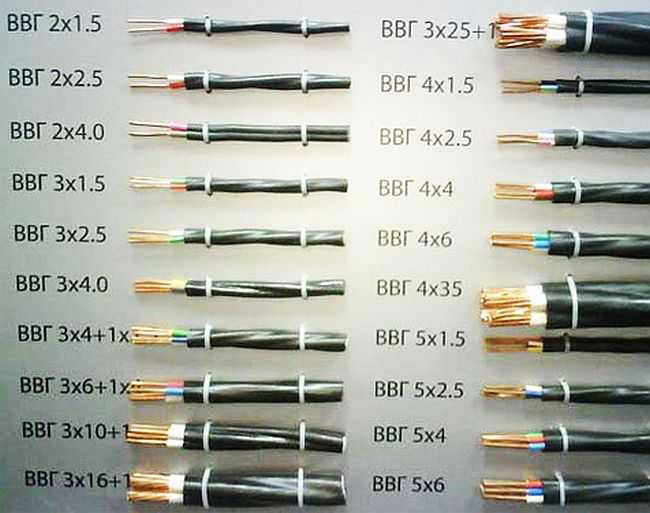
Specifications
The choice of cable depends on the operating conditions, the purpose of the object, the power of the electrical installations that it supplies, therefore, it is necessary to take into account the numerous technical characteristics of the VVG wire:
- One of the most important parameters is the cross section of the conductors of the cable, manufacturers supply the most popular grades with a cross section of 1.5 mm to retail chains.2… 35 mm2. Large cross-section cables up to 240 mm2 ordered individually from manufacturers.

An example of a stranded wire cable with a triangular (sectoral) section shape
The VVG copper cable has round conductors; for high-voltage options, the cross-sectional shape of the conductors is triangular (sectoral) forms.
- An important parameter is the number of conductive cores in the cable; single-phase networks with 3-4 cores or three-phase cores with 4-5 cores are used to power the equipment. Three wires are used as phases, one neutral blue and green/yellow for ground. An additional grounding conductor is made one step less than phase and neutral.
Table 1. The ratio of the cross section of the phase and ground conductors in the VVG cable.
| Main conductors, mm2 | 1,5 | 2,5 | 4 | 6 | 10 | 16 | 25 | 35 | 50 |
| Zero core, mm2 | 1,5 | 1,5 | 2,5 | 4 | 6 | 10 | 16 | 16 | 25 |
| Grounding conductor, mm2 | 1,0 | 1,5 | 2,5 | 2,5 | 4 | 6 | 10 | 16 | 16 |
- The long-term permissible load current depends on the cable cross-section and the conditions of its laying.
Table 2. Permissible current loads of cables with copper conductors insulated with PVC and halogen-free polymer compositions.
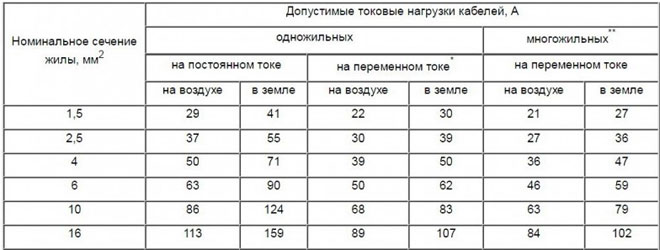
- The gasket is not recommended at temperatures below 15 °C without additional heating. At low temperatures, the insulating sheath may collapse during the unwinding of the coil;
- Operation is allowed at ambient temperature within -50…+50 °С;
- The operating temperature of heating of current-carrying conductors under load is 70 °C; in emergency mode, 90 °C is allowed for a short time;
- Cable bends during laying are limited to 10 radii with a rigid monolithic copper core. Flexible multi-core cables are allowed to be bent by 7.5 cable radii.
- The weight of the cable VVG ng ls, VVG ng - hf or other modification depends on the cross section, number of cores, insulation thickness, measured in kg / m.
- Most manufacturers of VVG cable determine the service life of at least 15 years, subject to the rules of operation.
These are average technical characteristics, they depend not only on the modification, but also on the manufacturers, for an accurate description of the properties, it is necessary to be guided by the passport data. Each manufacturer attaches a description and technical specifications to their product.
Design features of VVG of various modifications
Copper conductors have double PVC, insulation of conductors separately and a common sheath. Some heat-resistant models have a mica spacer between the main sheath and the wires.
The cores can be single-wire, rigid or flexible multi-wire, in some models the wires are arranged in one row and compressed by an outer insulating sheath. Such cables are called flat, the letter "p" is indicated in the abbreviation.
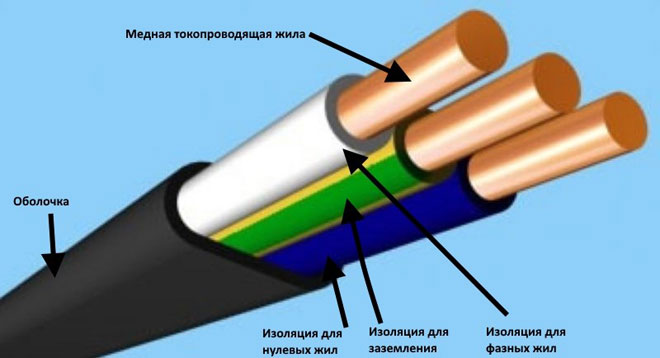
Good characteristics, reliability and ease of installation work make VVG brand wires in demand among consumers. Therefore, many companies manufacture them. Years of operation show the most reliable manufacturers:
- Podolskkabel;
- Pskovkabel;
- Sevcable;
- Moskabel.
Therefore, when buying, try to ask the sellers for the products of these companies.
Similar articles:
